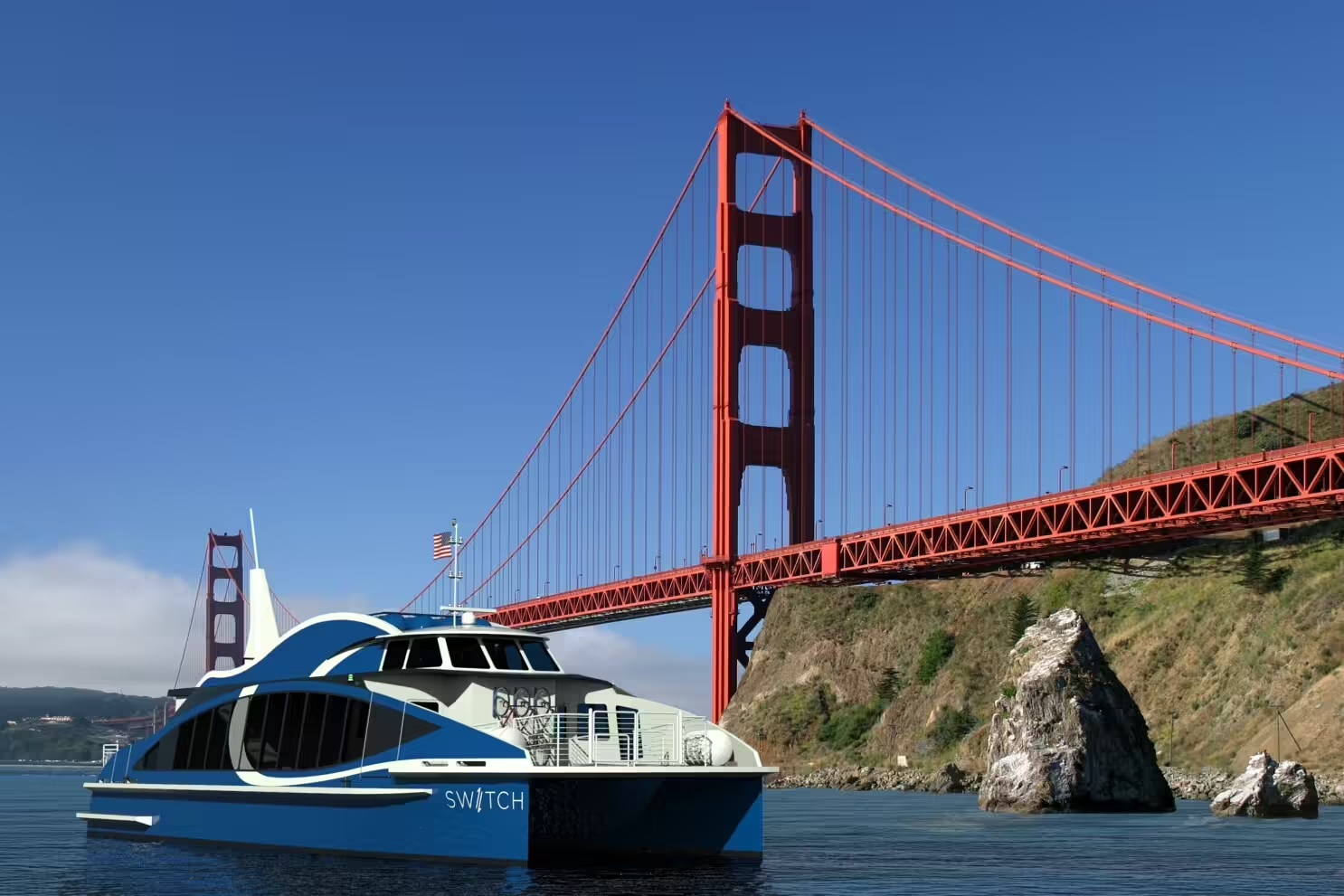California officials have unveiled the world’s first hydrogen-powered commercial passenger ferry, the MV Sea Change, which will begin operating on San Francisco Bay as part of a broader initiative to phase out diesel-powered vessels and reduce carbon emissions.
The 70-foot catamaran will transport up to 75 passengers between Pier 41 and the downtown San Francisco ferry terminal starting July 19. For the first six months, the service will be free as it operates under a pilot program.
“The implications for this are huge because this isn’t its last stop,” said Jim Wunderman, chair of the San Francisco Bay Area Water Emergency Transportation Authority. “If we can operate this successfully, there are going to be more of these vessels in our fleet and in other fleets across the United States and the world.”
The MV Sea Change can travel about 300 nautical miles and operate for 16 hours before needing to refuel. Its fuel cells generate electricity by combining oxygen and hydrogen, emitting only water as a byproduct.
This technology aims to reduce the shipping industry’s greenhouse gas emissions, which account for nearly 3% of the world’s total emissions. Though less than emissions from cars, trucks, rail, or aviation, shipping emissions are significant and increasing.
Frank Wolak, president and CEO of the Fuel Cell & Hydrogen Energy Association, highlighted the potential impact of this ferry. “The real value of this is when you multiply out by the number of ferries operating around the world,” he said. “There’s great potential here to reduce the carbon intensity of ports.”
Proponents hope that hydrogen fuel cells could eventually power container ships as well. The International Maritime Organization aims to halve greenhouse gas emissions from commercial shipping by midcentury.
As part of its efforts to combat climate change, the Biden administration is promoting hydrogen as an energy source, offering $8 billion to support the development of clean hydrogen production and delivery systems.
However, environmental groups caution that current hydrogen production, primarily using natural gas, still emits significant carbon dioxide. A study by Cornell and Stanford researchers found that most hydrogen production is not yet clean energy.
Advocates for hydrogen-powered transportation believe that future hydrogen production will become more environmentally friendly as renewable energy sources like wind and solar become more prevalent. These sources can separate hydrogen and oxygen from water, making hydrogen production cleaner and more cost-effective.
The Sea Change project was financed and managed by SWITCH Maritime, with the vessel constructed at Bay Ship and Yacht in Alameda, California, and All-American Marine in Bellingham, Washington.



